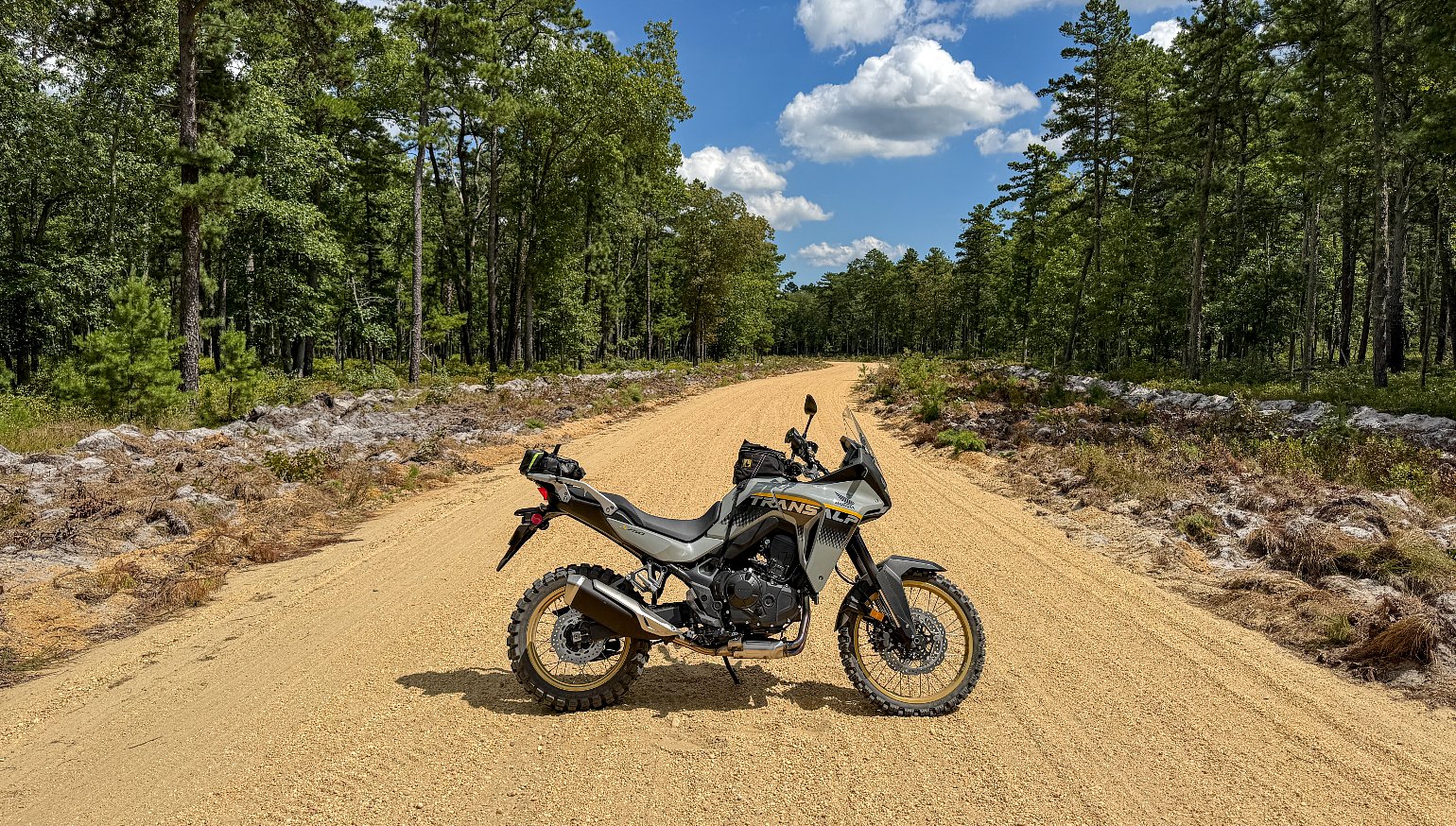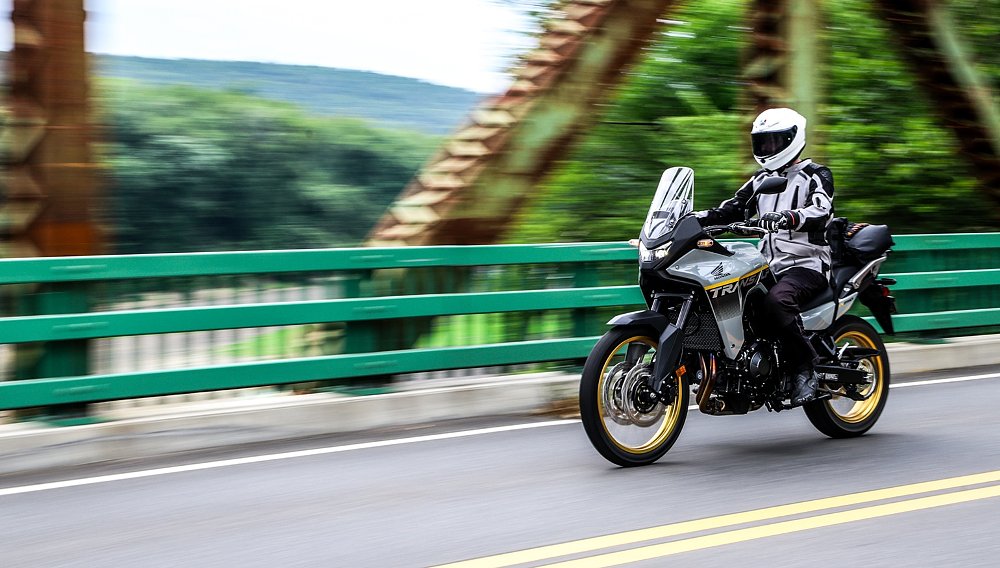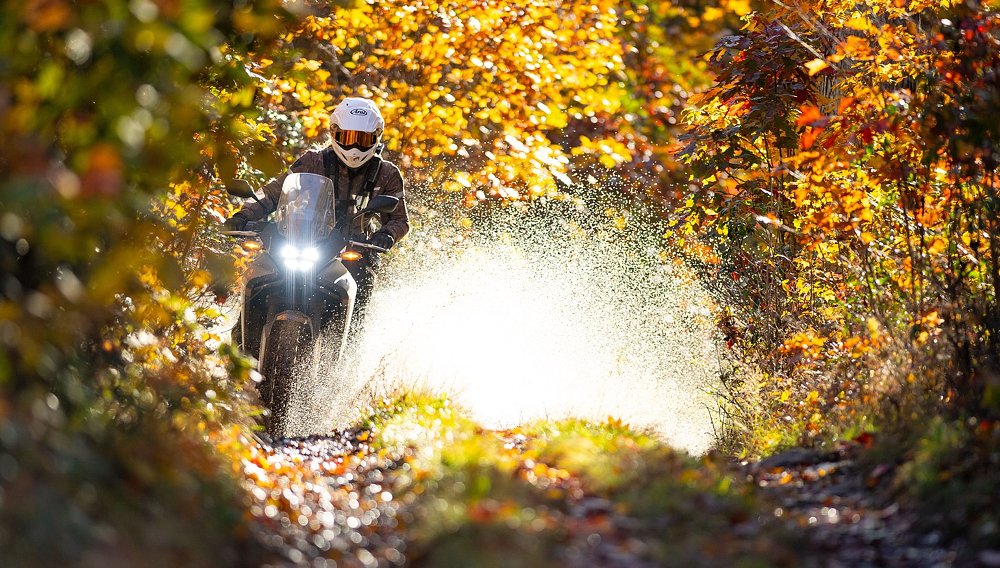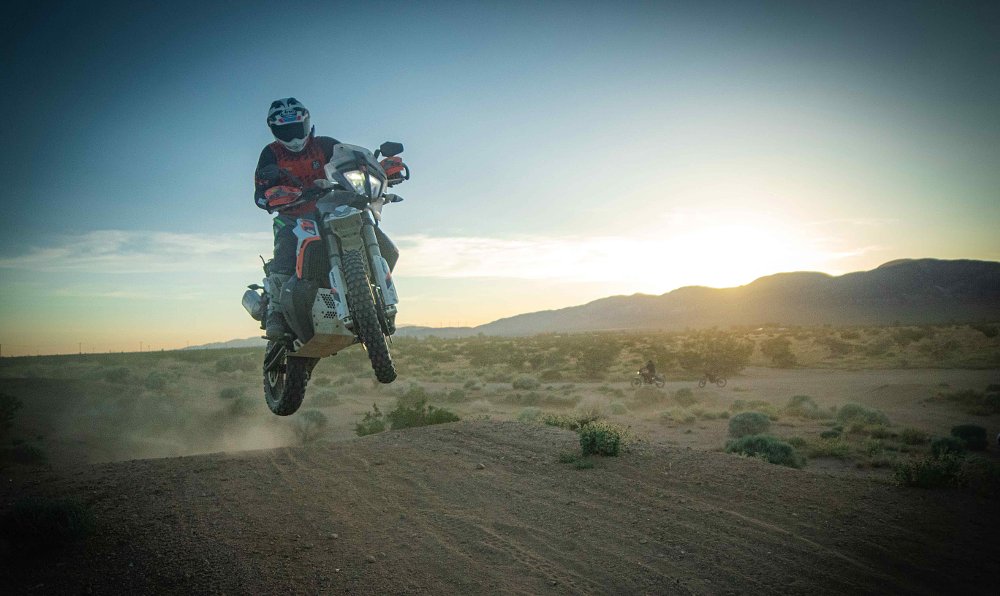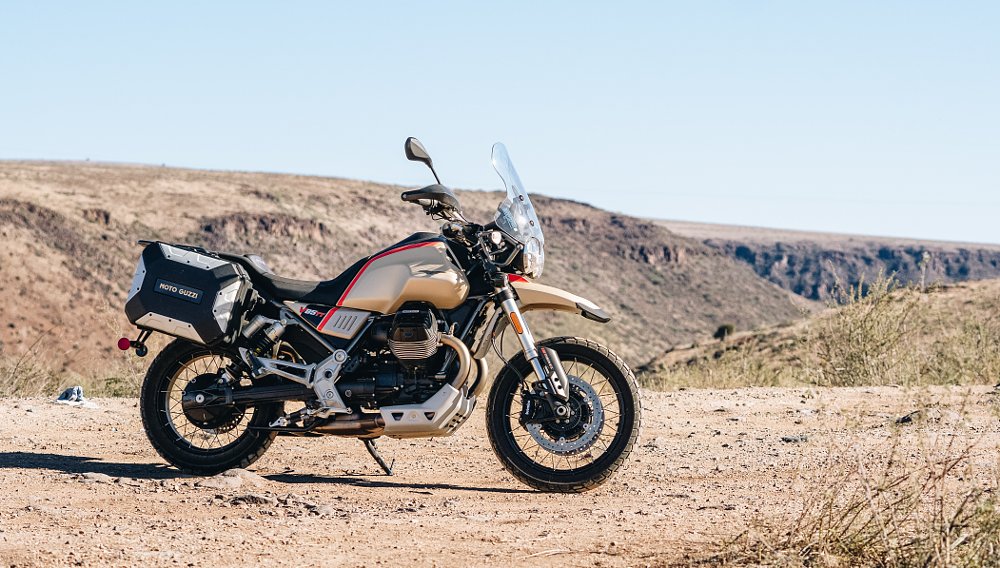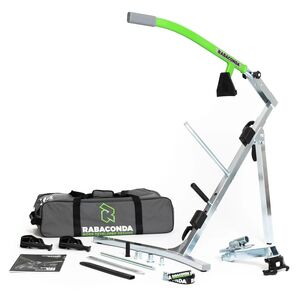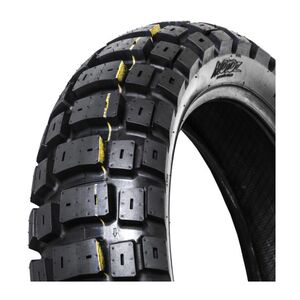“Keep in mind that Honda's design brief for this motorcycle doesn't include 'off-road,' just 'all kinds of roads.' You are going to test it at something it's not technically designed to do, like me taking the Aprilia Tuareg to a track day.”
I received this text message from our fearless leader, Lance Oliver, shortly after taking possession of the new 2025 Honda Transalp that he had just tested on a road trip. Seems he was afraid I was going to examine this motorcycle through the wrong lens. Apparently he’s been taking Zack Courts’ impressions of me on the Highside/Lowside podcast as a "crusher of ADV bikes" to heart. Contrary to popular belief, my KTM 890 Rally hasn’t completely spoiled me from being able to appreciate and evaluate a good middle-of-the-road adventure bike without bias.
So, with Lance’s words ringing in my brain, I set out on an “all kinds of roads” adventure with the new Honda Transalp.
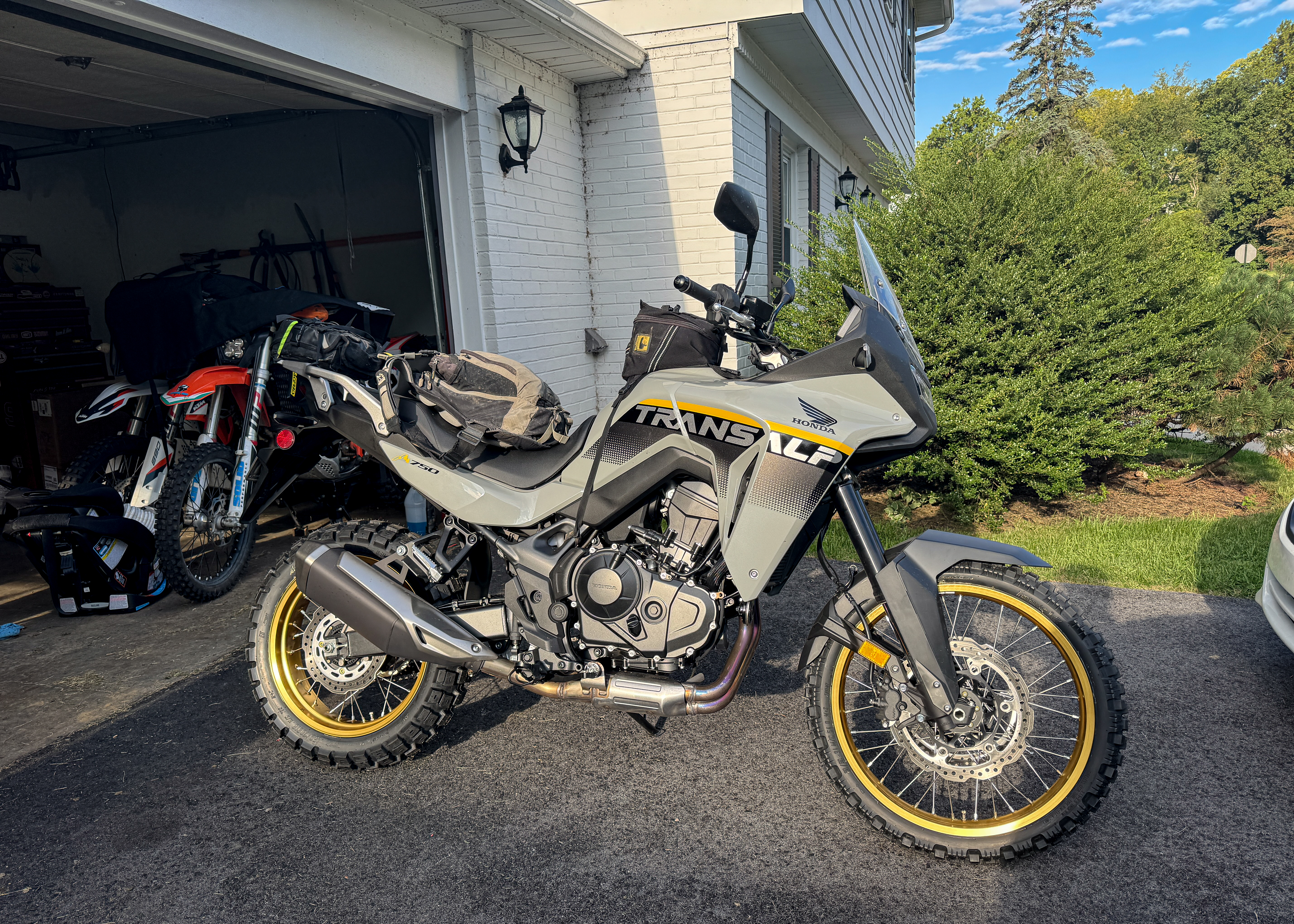
Bike setup
My 300-mile, single-day, all-road adventure kicked off in the suburbs of Allentown, Pennsylvania. Since moving last year, I'm now about 100 miles from one of my usual off-road riding areas, the Pine Barrens of New Jersey. Since Liz Kiniery already reviewed the initial release of the Transalp in my other favorite riding area, Bald Eagle State Forest in Pennsylvania, I figured it would be good to try something different for our readers!
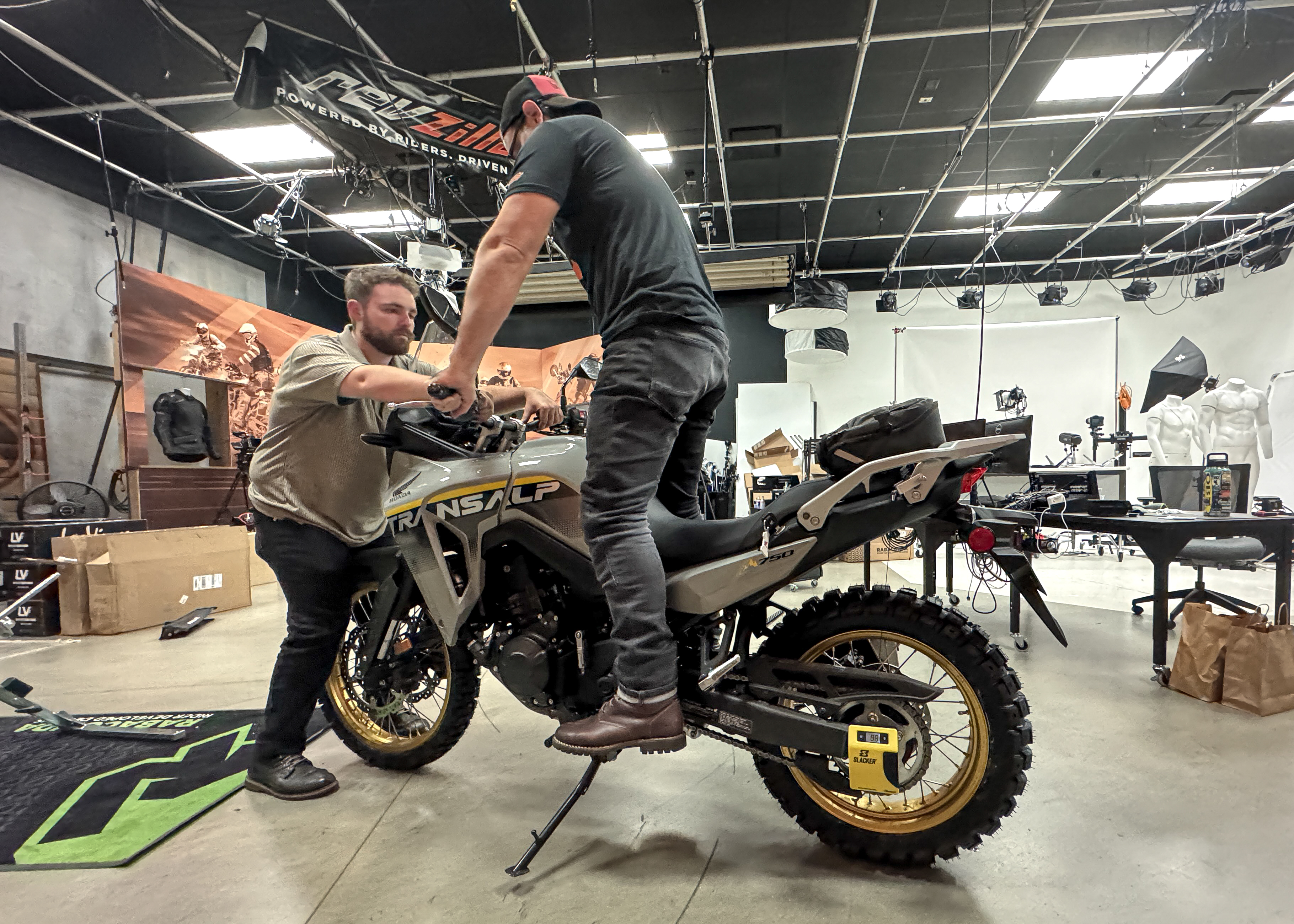
As Lance mentioned in his review of the Transalp on the road, the suspension is rudimentary, but there are adjustments for preload at both the front and rear. Factory settings, according to the owner’s manual, being six turns and two clicks out respectively. That being said, a recognized consensus in the ADV community is to set rider sag to about 33% of overall travel (we have an article for that). With my current wet weight of 225 pounds (sans gear), I had to crank up the rear preload collar to the maximum setting of seven (I also matched the front fork with the maximum 15 turns). Even then, the Transalp fell about an inch shy (25 millimeters, to be exact) of the ideal mark.
In addition to adjusting the suspension, I removed the rubber inserts in the foot pegs via an 8 mm bolt, rotated the handlebar forward about a half an inch, and, using a Rabaconda, installed a new set of Tractionator RallZ tires from Motoz. While Motoz is an established tire brand in the ADV community, they’re new to the RevZilla stable and I was interested to try them on my home turf.
While it’s clear that the Transalp’s spring rate is aimed at someone, ahem, with less gas in the tank than myself, as Lance mentioned in his review, it doesn’t seem to affect one’s enjoyment of the bike as a simple touring machine on the street. But Lance already covered that, so let’s get dirty!
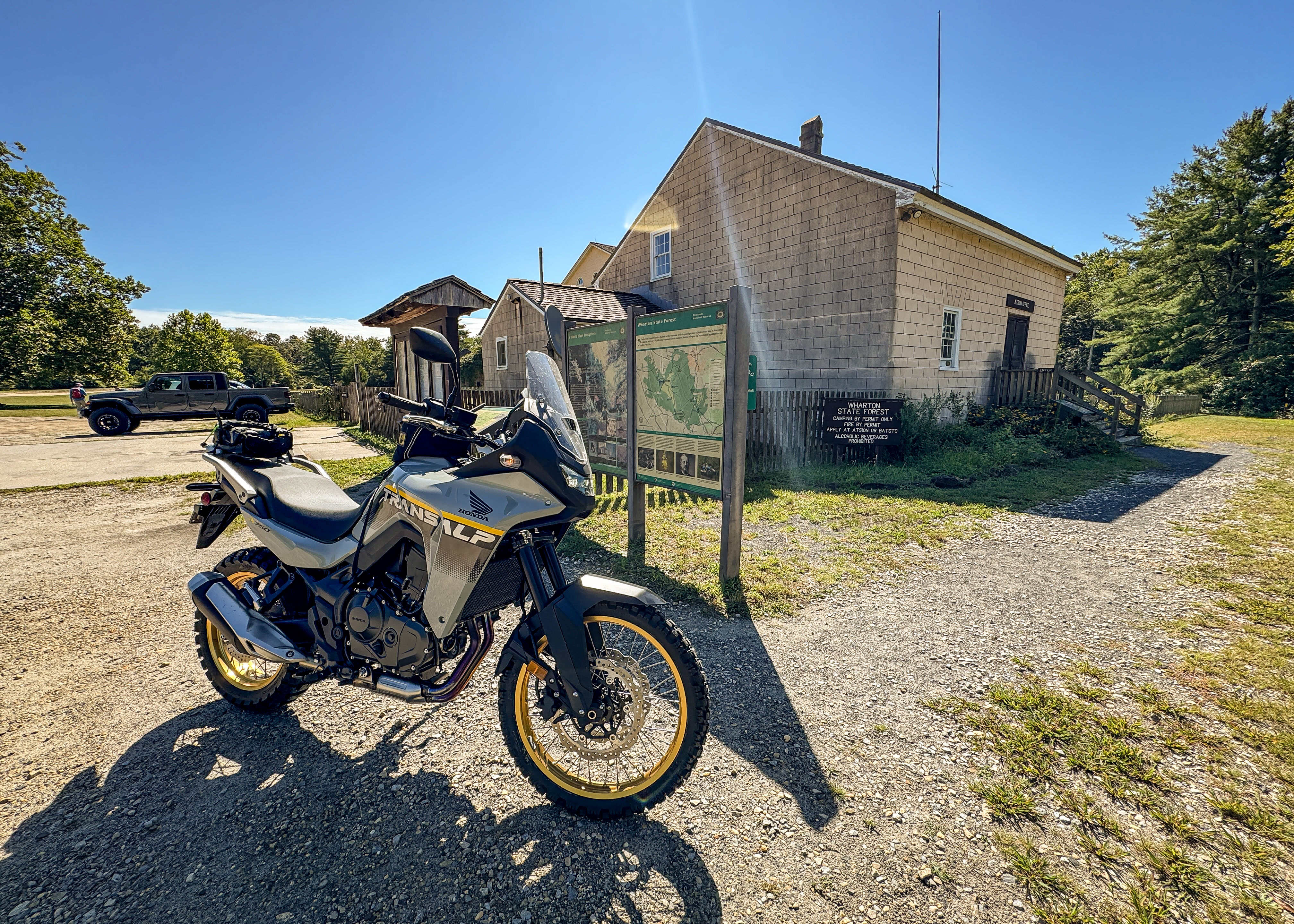
A Transalp off-road
After a 100-mile mix of freeway, two-lane country highways, and some twisty back roads, I reached the Atsion Ranger Station with an indicated half a tank of gas left. While the 755 cc parallel-twin engine feels like a spirited firecracker, it sips fuel like a regal gentleman at an English tea party.
Turning off the blacktop and onto a sandy, two-track, Jeep trail, I thumbed my way into the Transalp’s ride modes. My first and immediate takeaway was that if you think “Gravel” mode is the place to start an off-road adventure, I am here to tell you, it is not. This mode is more akin to a “Rain” mode where it maxes out traction control, cranks up ABS intervention, and is designed to keep things as stable as can be. As I quickly learned, it makes it very hard to ride the bike off-road.
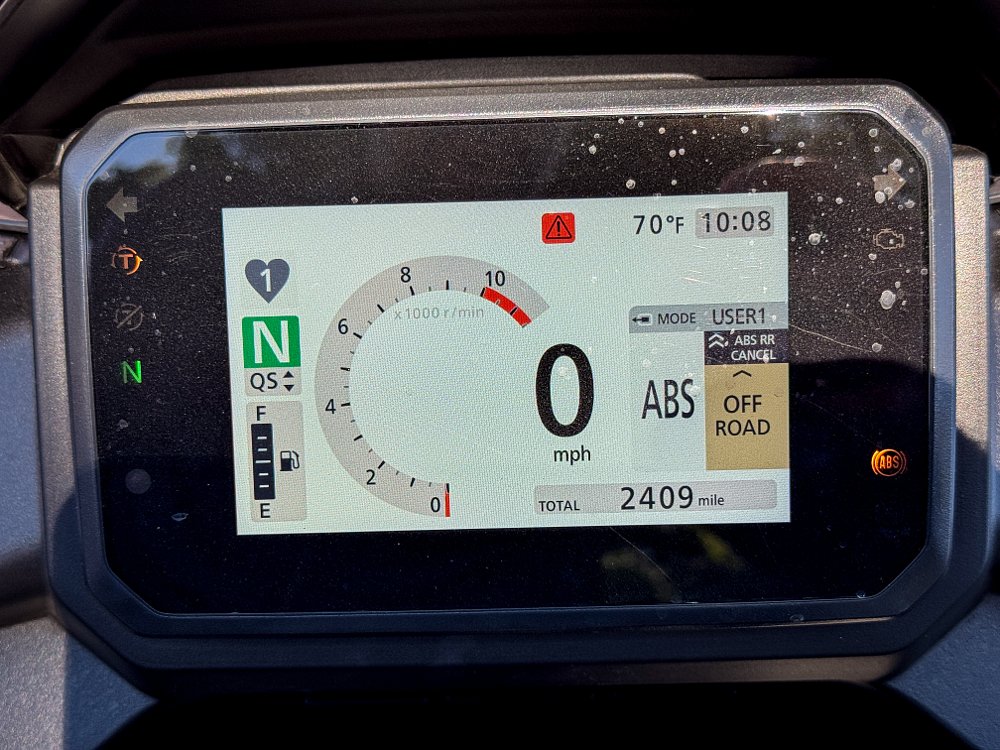
Using a combination of the “Mode” button and the joystick on the lefthand control, I thumbed my way to User 1 mode. In the two User modes, the rider is able to adjust engine braking, power delivery, traction control, and ABS. For myself, I turned traction control off, left power fully up, knocked the engine braking back to two out of three bars, and turned the ABS off at the rear wheel. Speaking of which, it’s important to note that turning ABS to “off-road mode” doesn’t disable ABS at the rear wheel. You have to enter into off-road ABS mode and then toggle and hold the joystick “up” to fully disengage the rear wheel. This process feels redundant compared to what “off-road ABS” usually means across other ADV models.
My plan for the day was to stick to the basic Jeep trails that I utilized when learning to ride adventure bikes 10 years ago. From there, I would stretch the Transalp’s ability through a few sections of whoops and deeper sand to find its limitations. I figured that would be a good “all kinds of roads” approach.
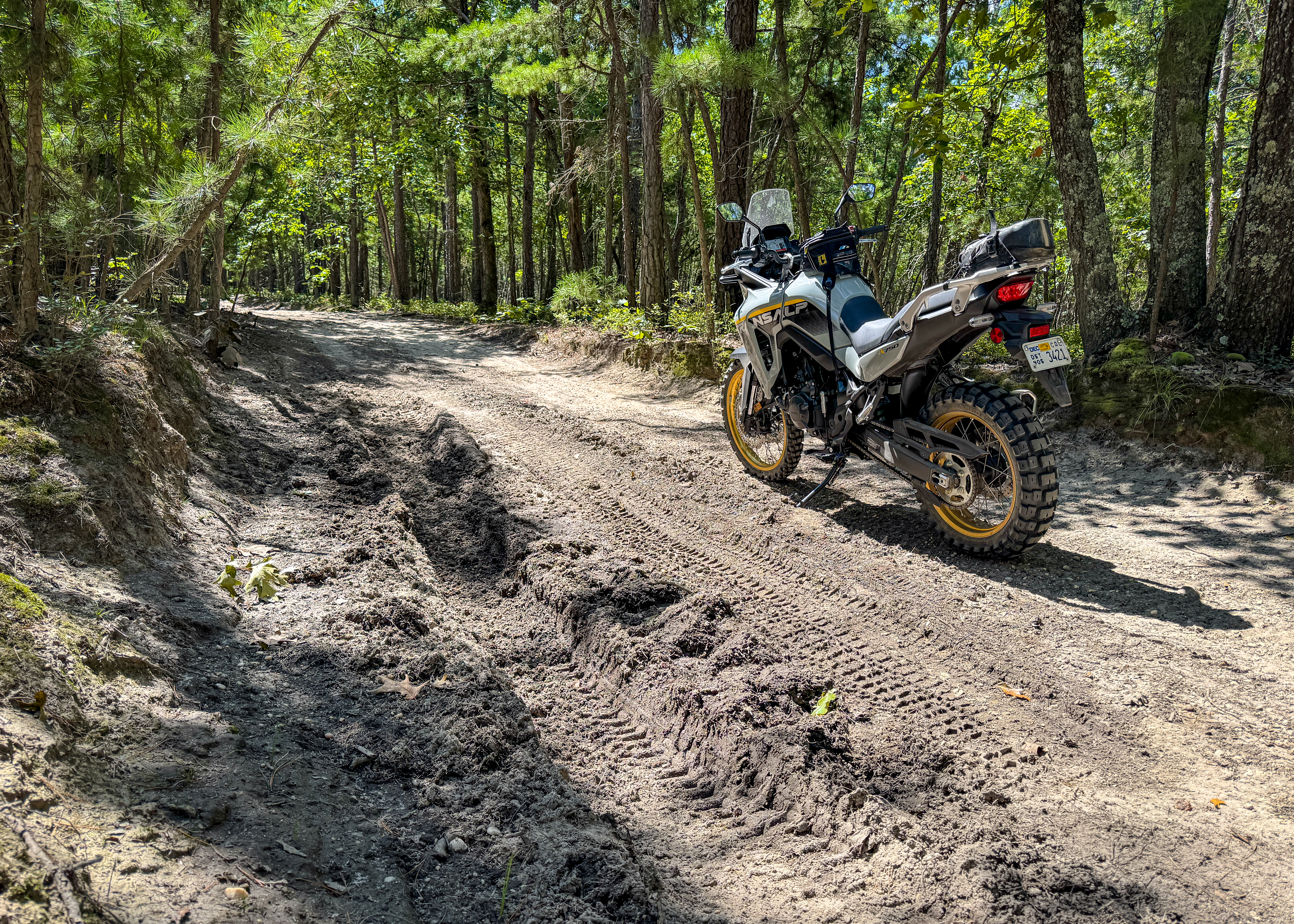
I kicked things off on a section of trail that was a favorite of mine for always being relatively packed down with some fun and easy sections with little whooped out mounds that could be wheelied over without bumping the pace up too high. The Transalp enjoyed this stretch of trail. It felt planted and fun as long as I kept the pace around 25 miles per hour and limited strong inputs of throttle.
This is where I will respectfully disagree a bit with Zack Courts’ comments on Daily Rider that the Transalp’s engine “doesn’t feel like an engine that’s been repurposed… it feels like an adventure engine.” Unlike other manufacturers that “retune” a street variant of an engine to work a bit better in the “all-around” nature of an adventure bike, Honda just stuck their Hornet engine in the Transalp and called it a day. Because of this, the engine feels very strong and sporty on the street, but off-road the rear wheel just wants to get rowdy under acceleration, preferring to spin as opposed to making traction.
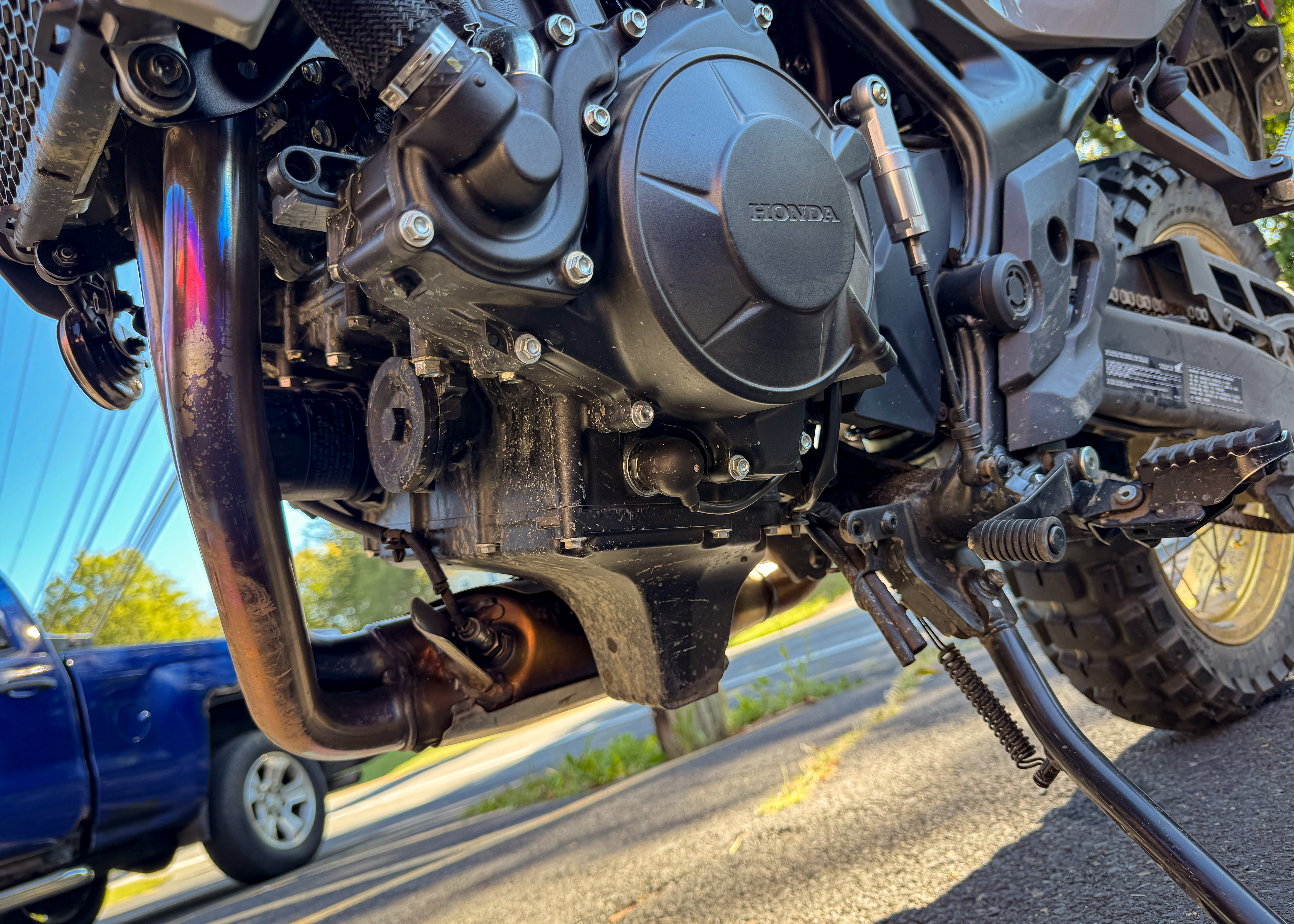
Additionally, the oil pan sits precariously low next to the underslung exhaust. While both of these things limit overall ground clearance, the location of the oil pan leaves the Transalp exposed to potential failure and limits exactly how far you’d want to push your adventure off-road. Especially without a skid plate installed.
To resolve the issue of spinning the rear wheel, I found that dialing the power back a bit in the User mode setting helped the Transalp regain its footing off-road, building traction and feeling a bit more manageable and fun while still commanding a fistful of thrust over said whoops.
This gained confidence in traction led to a bit more "vertical gain" over a few of my favorite sandbars. What goes up, however, must come down. It became apparent that even with my adjustments to the suspension’s preload, and Honda’s changes in damping to the 2025 model year (more damping in the rear shock, less damping in the front fork), the Transalp’s suspension is a limiting factor off-road. After a few squirrely landings where I reached the extent of the Transalp’s travel, I decided it was probably best to rein in my enthusiastic right hand short of introducing it to the ground.
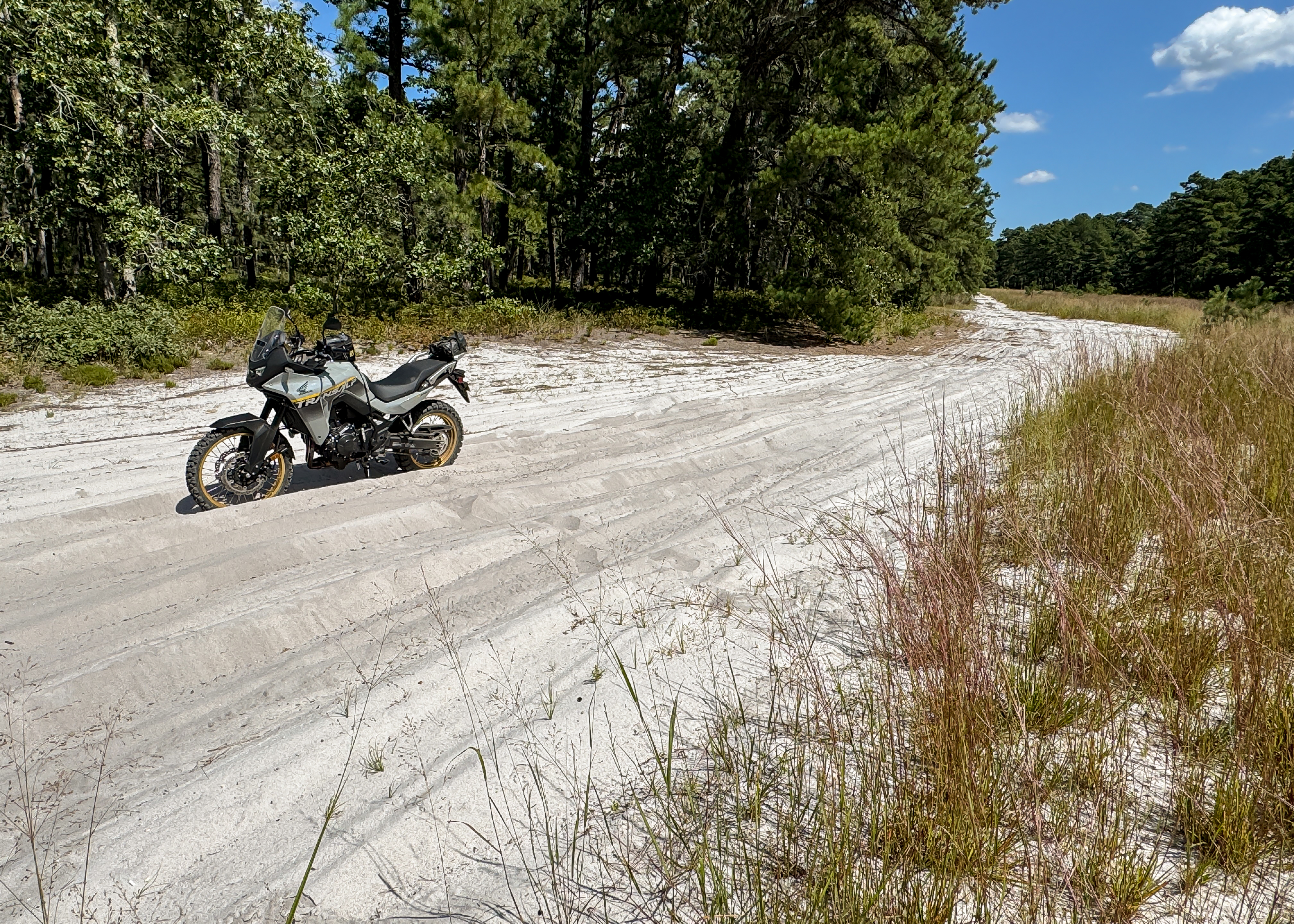
From my fun section of fast whoops I turned onto a stretch of trail known locally as “The Sand Highway.” This stretch features a section of particularly deep fluffy sand where I learned as a novice adventurer, but also where I still bring a local ADV bike to test.
The Transalp, which had felt relatively sure-footed in the more packed terrain a moment earlier, suddenly felt top-heavy and unsure of itself. The front end felt vague and unpredictable in the deeper sand and I struggled to keep my speed up and weight back. I found myself dabbing my foot to the ground more regularly than I would have liked.
I don’t mean to suggest here that the Transalp can’t make it through, but depending on one's ability, it might not be as graceful in its approach. I would classify my off-road ability as “decently intermediate” and would liken my trip through this section of deep sand to a giraffe wearing roller skates traversing a frozen lake.
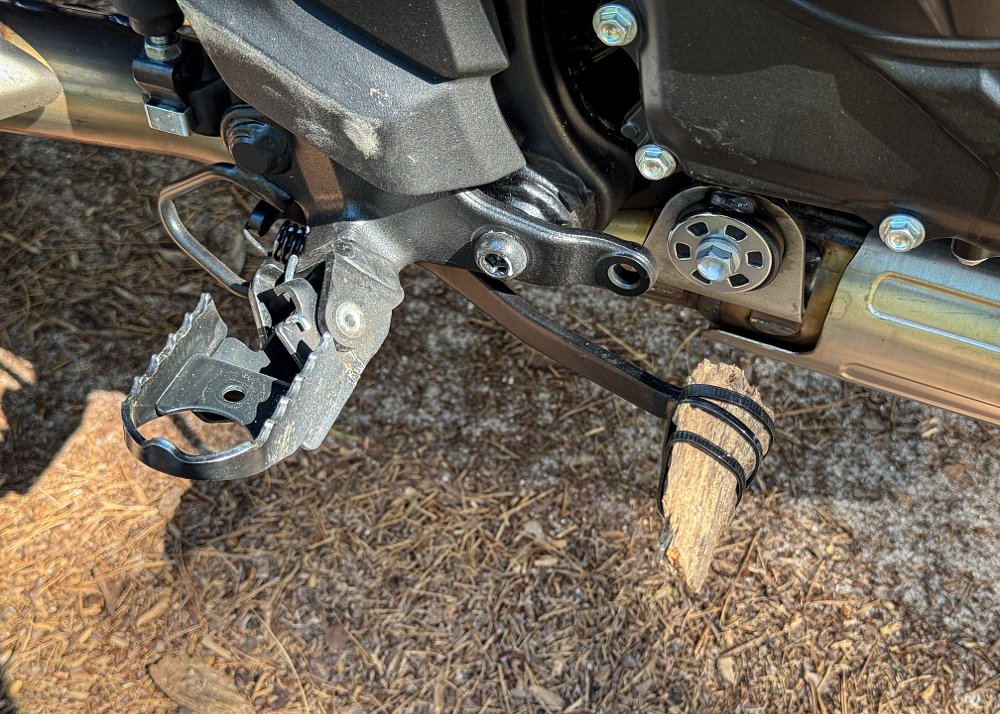
It didn’t help matters that I was having trouble finding the rear brake while standing. As there was no way to adjust the height of the rear brake pedal, I got creative with some zip ties and a fallen tree branch. My little mod worked great and lasted nearly the entire ride before crumbling under the weight of my right foot. Ultimately, if I was buying a Transalp, I’d look for a more permanent solution.
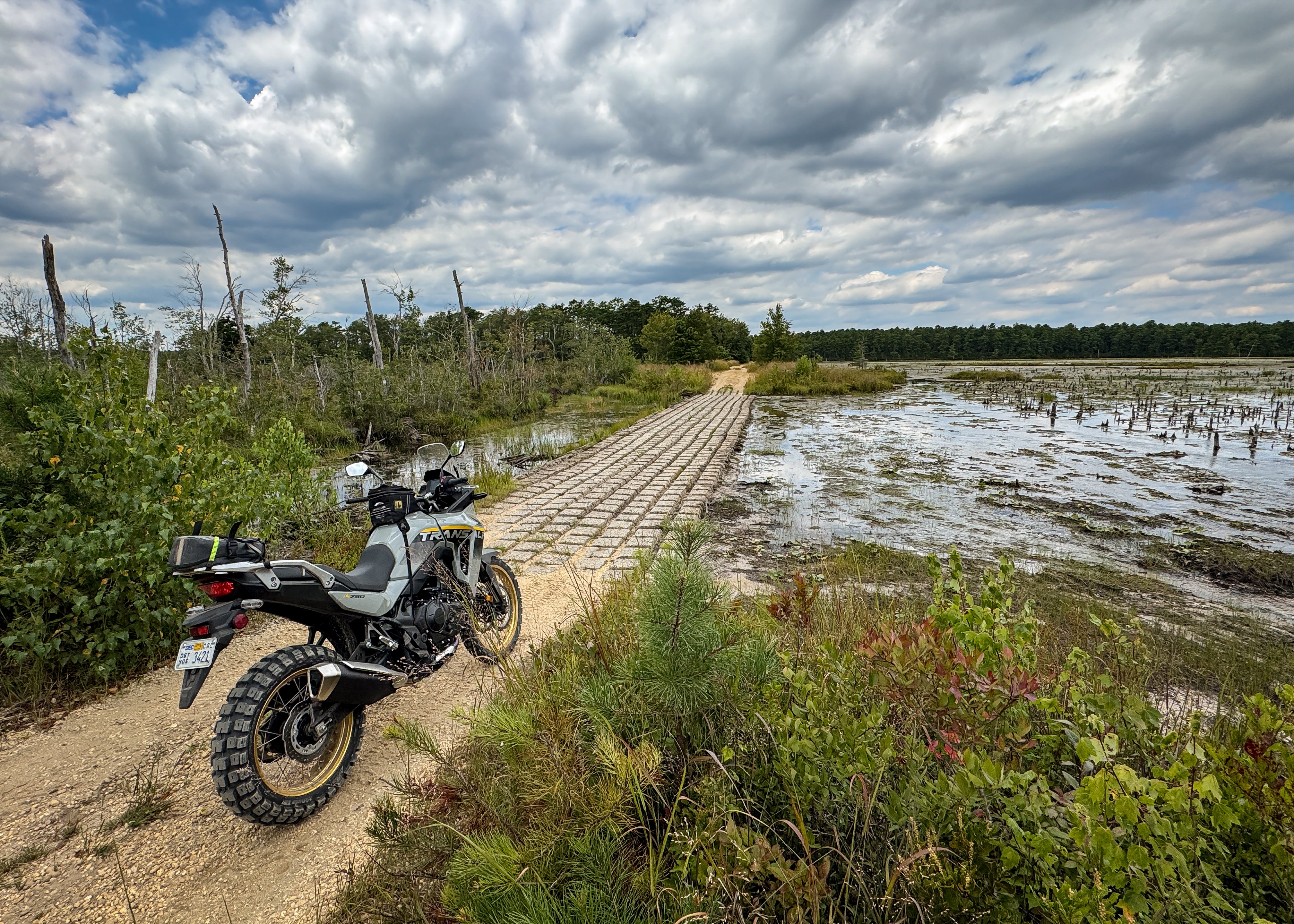
Pointing the bike east, I abandoned the deeper sand and rode through a section of scenic cranberry bogs on my way to lunch. I am always humbled by the calm beauty of the Pine Barrens. I can’t help but think of all of the travelers blasting down the Garden State Parkway, but a few miles away, who have no idea that just beyond the Barnegat Road off-ramp lie one million acres of nature to explore.
Popping out of the woods on Route 72, I turned right onto Country Highway 539 and headed south. Just a few miles down the road on the left-hand side sits Lucille's Country Cooking Luncheonette. Receiving its 15 minutes of fame when it was featured in "Anthony Bourdain: Parts Unknown,” the small country diner has been serving Pine Barrens adventurers since 1975.
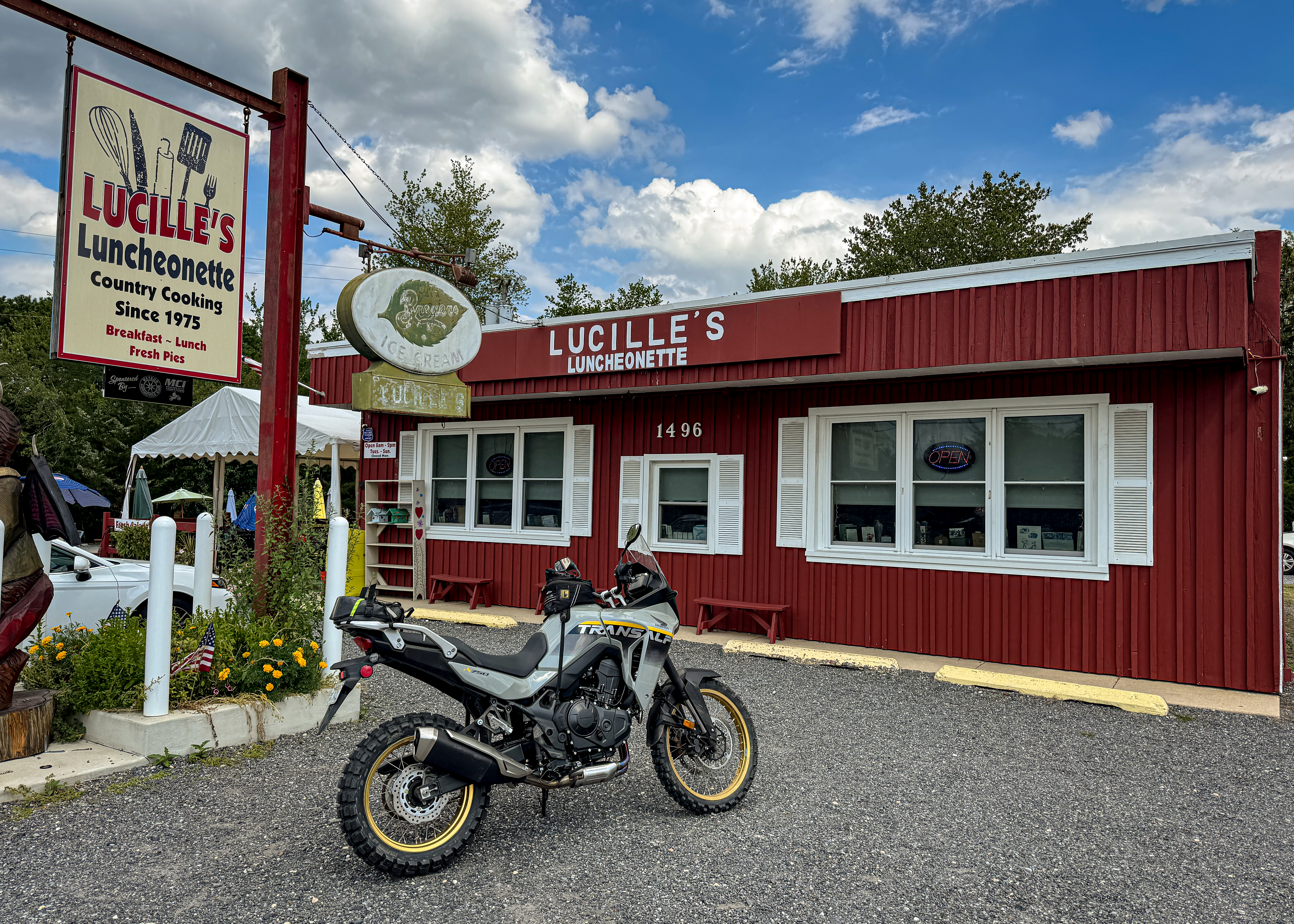
I made quick work of a BLT sandwich and a Coke, before heading back to my mid-sized mount. With the sun starting its descent to the horizon, I had one more test to tackle before making my way back home.
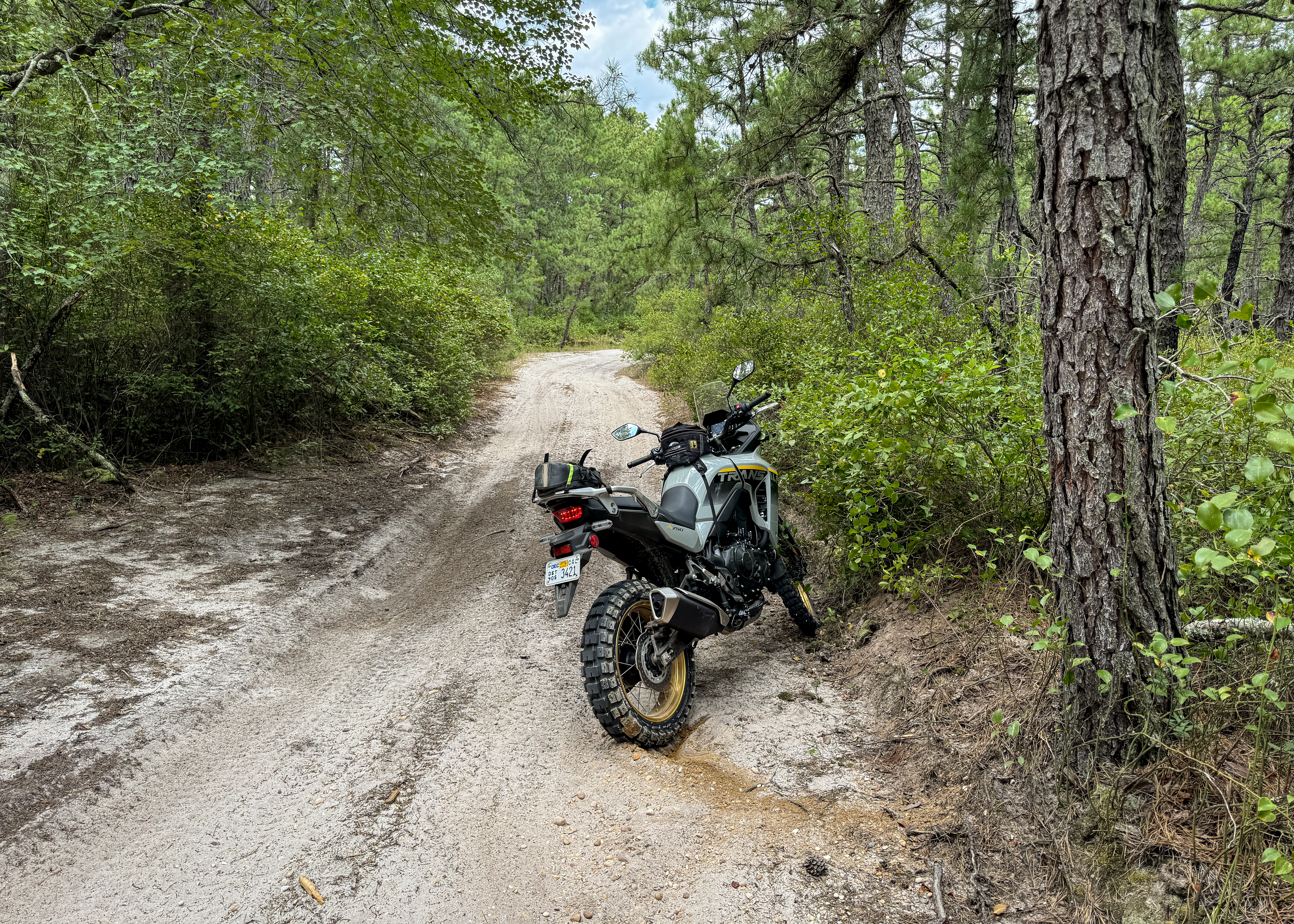
Leaving Lucille’s, I navigated a series of wide open, relatively hard-packed and whoop-free dirt roads. Here the Transalp exposed its true calling off-road. It was comfortable blasting down these two-lane dirt highways and even sliding around a little bit through corners. However, every now and then a softer section of sand would rear its head and gently remind me of the Transalp’s limitations with a butt-puckering tuck of the front wheel. One of which not so gently led to a bit of a tank-slapper which had me parking the Transalp in a thornbush at the side of the trail.
Having had a successful day thus far with no damage to a bike, I decided to count my good fortune (a day of adventure riding where I don’t damage a bike or myself is a very good day) and head for home.
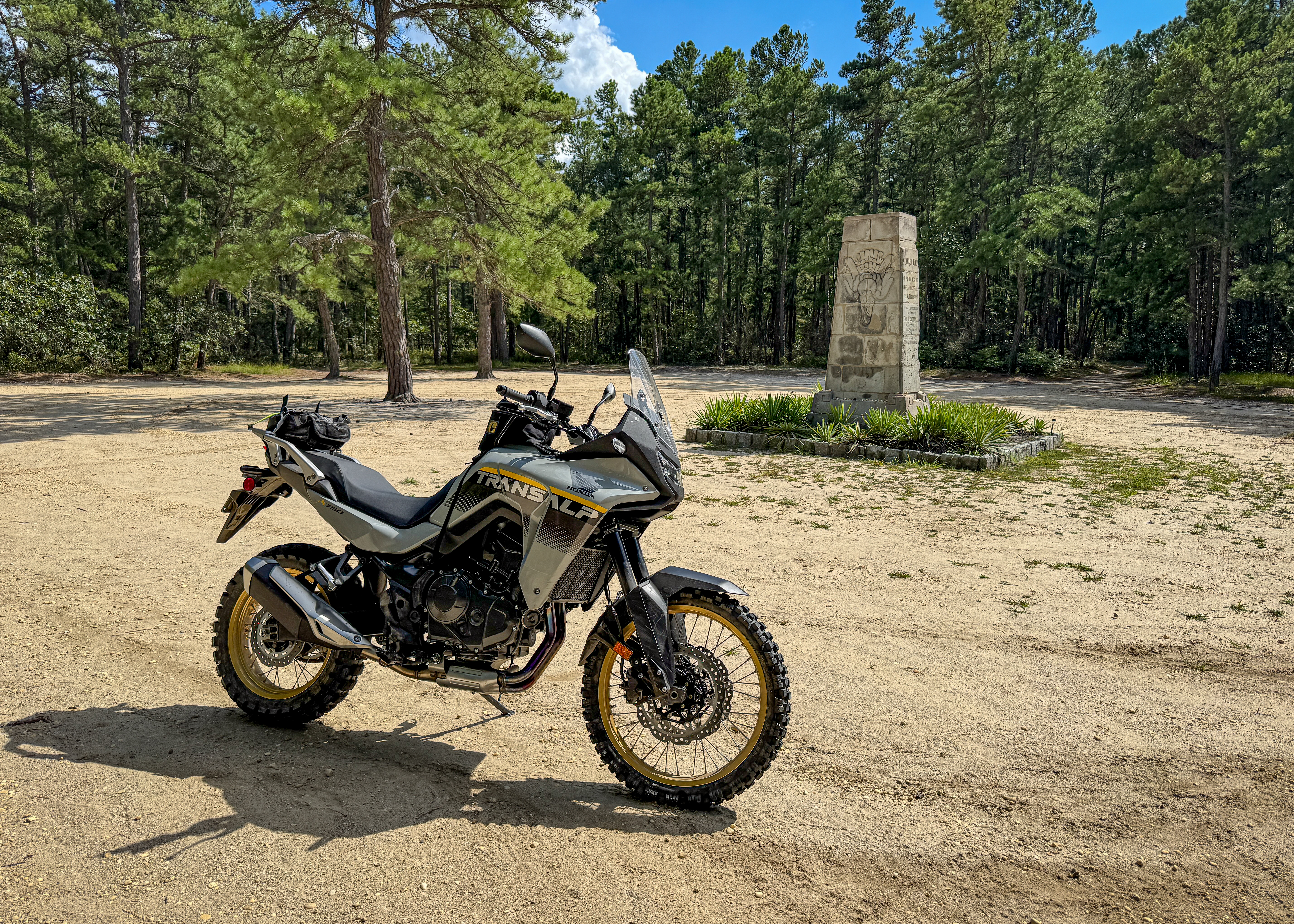
Exiting Wharton State Forest just north of where I entered, I passed the Carranza Memorial, a stone monument marking the crash of Captain Emilio Carranza Rodríguez. Known as the “Lindbergh of Mexico,” Captain Carranza was returning to Mexico from a goodwill mission to New York when his plane crashed shortly after takeoff in 1928. The monument was erected in 1931 by the American Legion as a reminder of his message of peace and serves as a quiet place of reflection while taking in a fun day of riding.
Conclusion
The Transalp’s fuel light came on with an indicated 197 miles on the trip meter. Filling up before getting on the highway, the bike took 3.8 gallons of gas. Some quick math indicates I averaged 51 mpg and I could have probably gotten 230 miles of range out of its 4.5-gallon tank before I would have been in danger of reviewing how heavy a Transalp was to push down the Pennsylvania Turnpike.
Coupled with Lance’s review, I can confirm that the Transalp is in good standing as a solid all-day touring bike. But what about a good adventure-touring bike?
One of the things I failed to really discuss is ergonomics. In my opinion the seat felt way too low and the handlebar way too high. For some, this might be seen as an advantage, but at six feet, three inches tall, I felt that my knees were cramped and the rise to the handlebar led to a bit of disconnect between the rider and the front end off-road. That disconnect, coupled with the softness of the suspension, led to a bit of a struggle riding off-road.
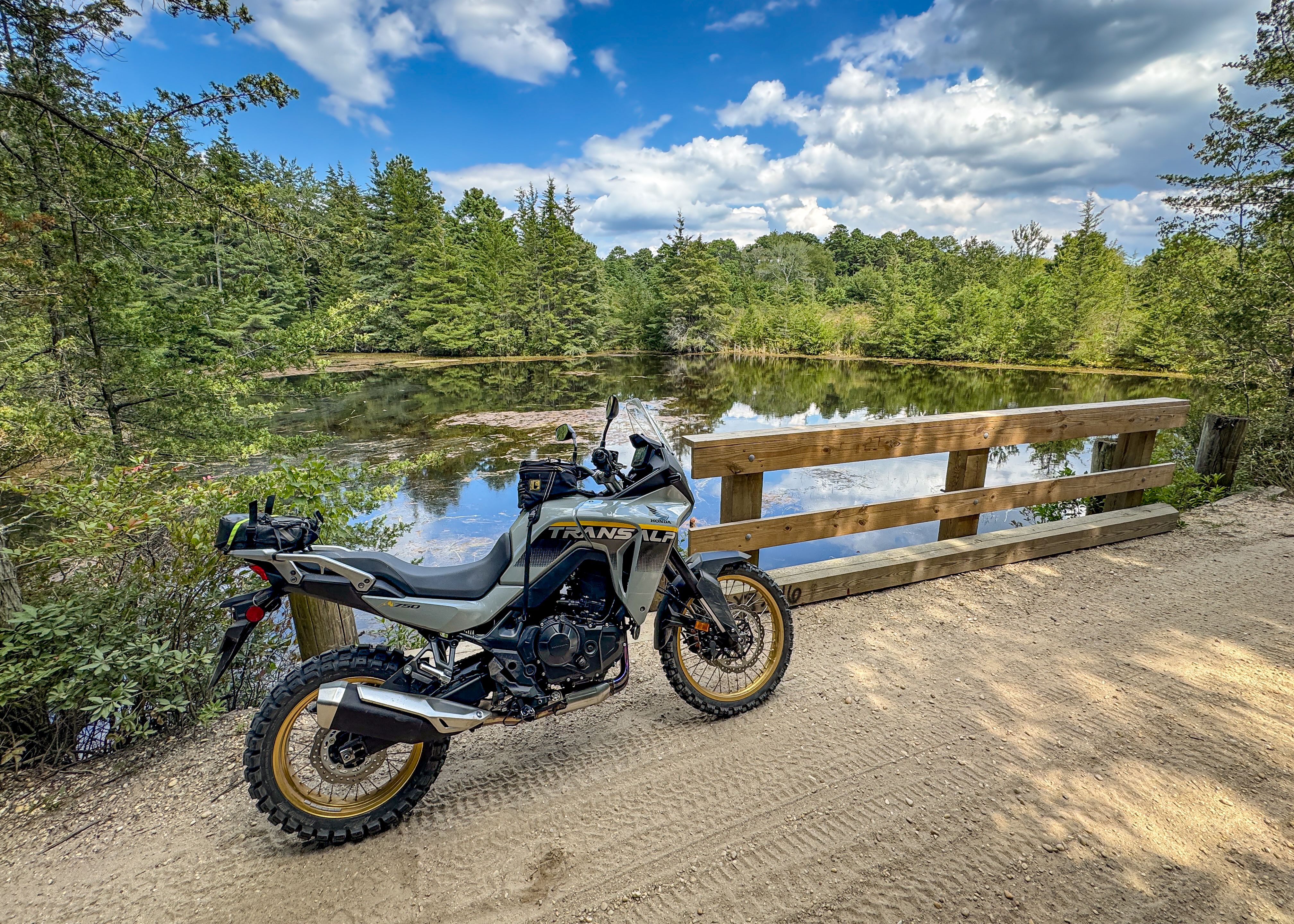
To be clear, I agree with Zack’s comments that you can absolutely enjoy riding a Transalp off-road, but with the caveat that it depends on what you’re expecting out of an adventure bike. If you’re looking for a fun touring machine that can also be used to trundle down a dirt road for an “any-road” adventure at a "reasonable" pace, the Transalp is worthy of your attention. Especially if you take into account Honda’s reputation for reliability and extended dealer network, as Liz Kiniery pointed out in her initial review. However, if you’re looking for something that leans heavier into the off-road side of the aisle, then there are better options for you.
I don’t know if I am adding anything new to the Transalp conversation with these thoughts, but I enjoyed the opportunity to throw my hat in the ring. I think it’s a great-looking bike with a face and a price tag that’s easy to love. While I could argue for a few key design adjustments to make it better for my particular flavor of ADV riding, that might push it further out of the realm of enjoyment for someone else.
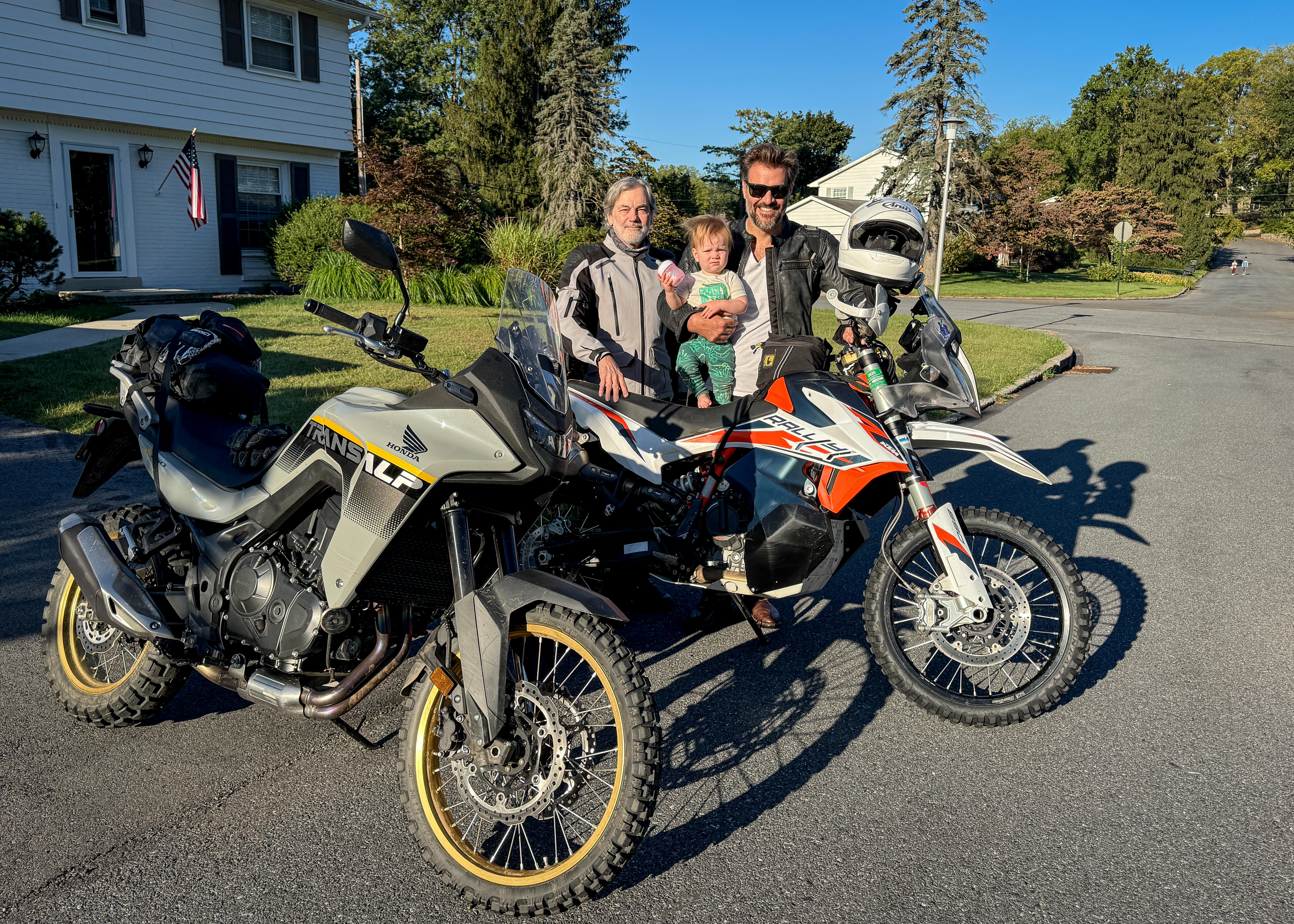
And for that the Transalp is a welcome addition to the middleweight crowd, a segment rife with options for all kinds of roads, and all types of riders.




